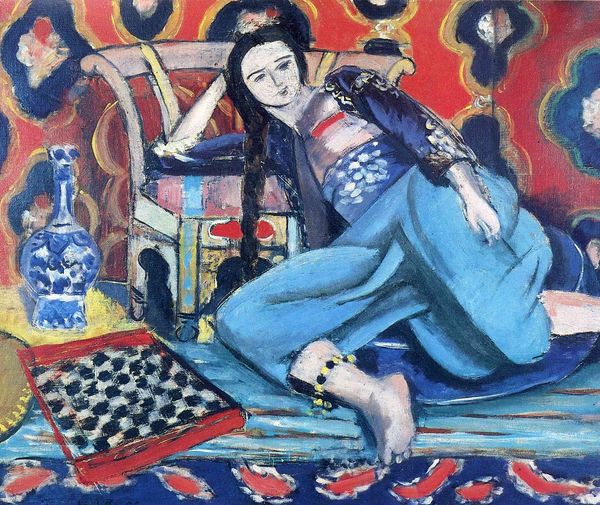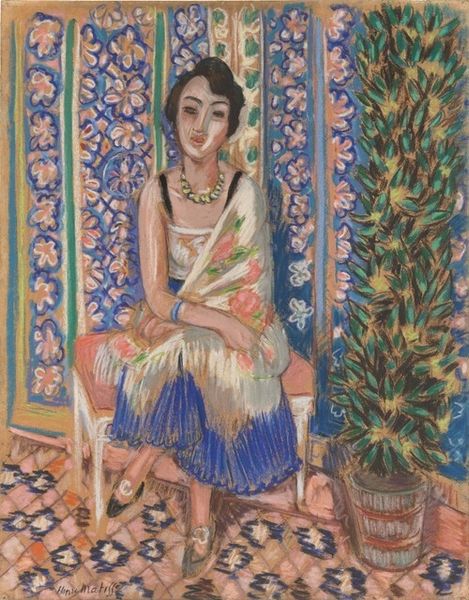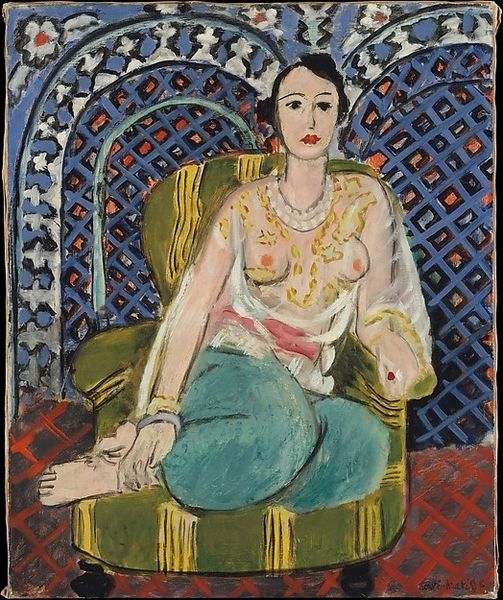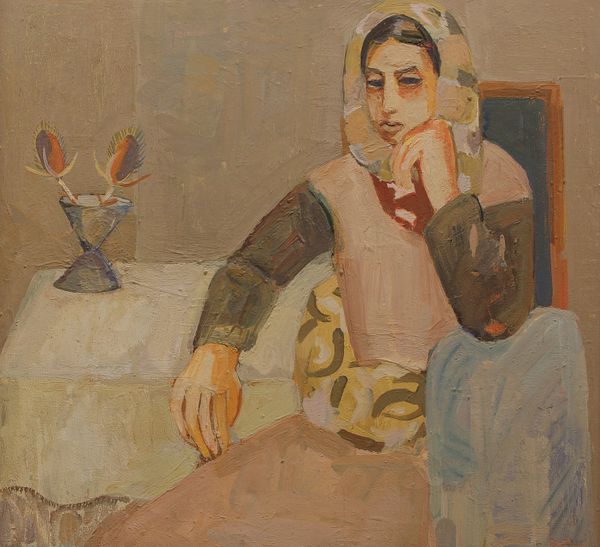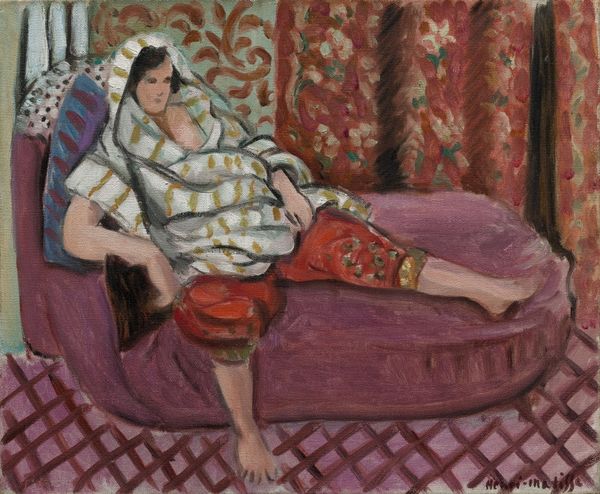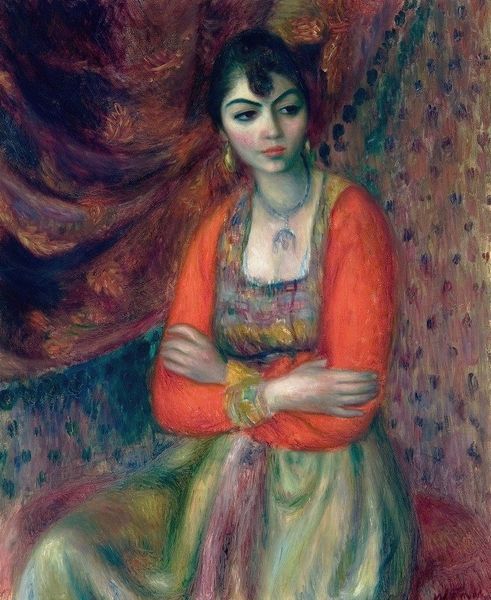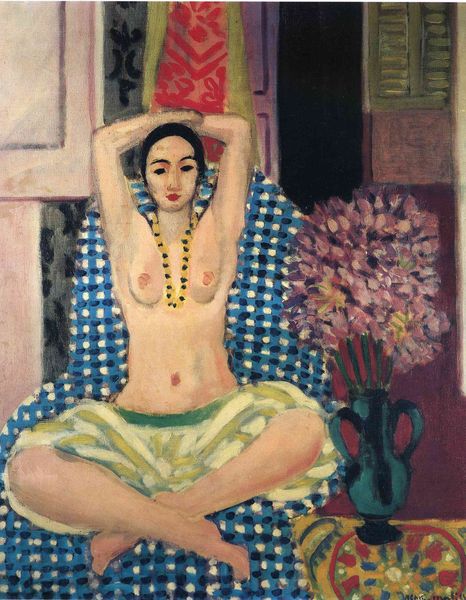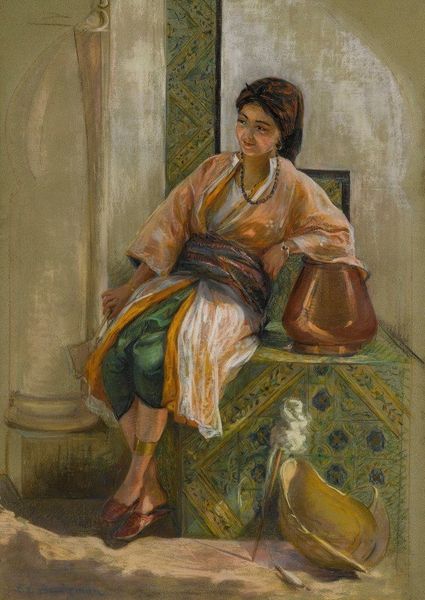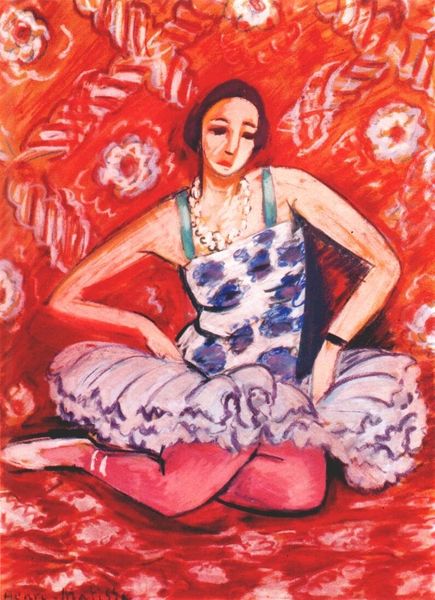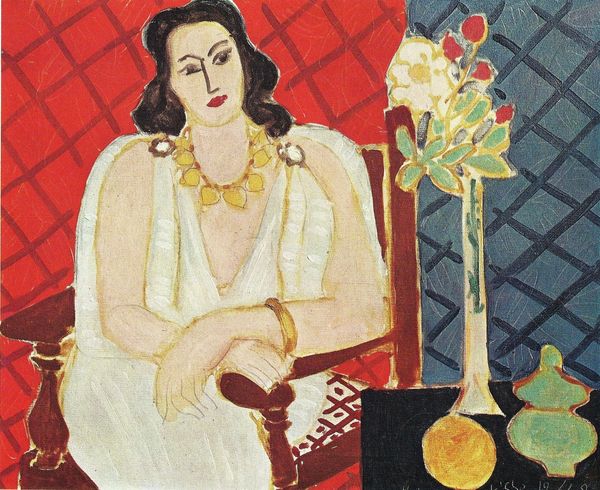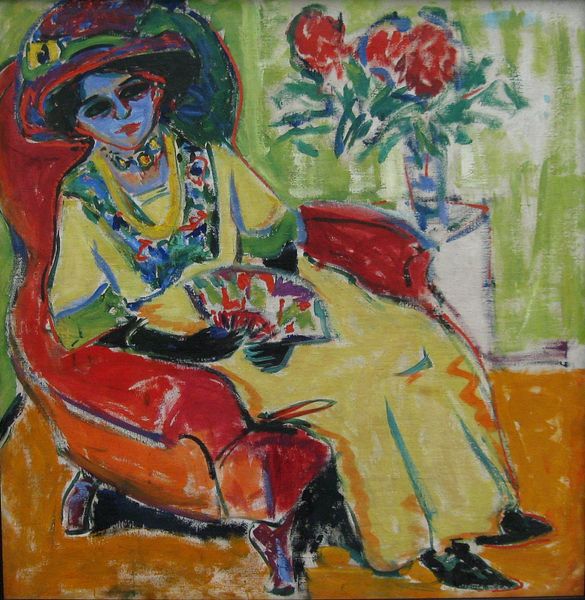
Seated Odalisque, Left Knee Bent, Ornamental Background and Checkerboard 1924
0:00
0:00
henrimatisse
Museum of Modern Art (MoMA), New York City, NY, US
Dimensions: 74.3 x 55.7 cm
Copyright: Henri Matisse,Fair Use
Curator: We’re now looking at Henri Matisse’s "Seated Odalisque, Left Knee Bent, Ornamental Background and Checkerboard," created in 1924. This painting resides here at MoMA. Editor: The vibrant color just leaps out! That turquoise-green and deep violet against the busy background—it's a wonderfully claustrophobic and exotic feel. Curator: "Exotic" is key here. This painting speaks to Matisse’s engagement with Orientalism, a Western fascination with perceived Eastern cultures and aesthetics. He repeatedly visited North Africa, finding inspiration in the light and decorative arts of the region. This piece exemplifies how those travels and interests impacted his work. Editor: It is striking how the decorative flattens the depth. Is that an intentional destabilizing effect, visually? The checkerboard, the floral wallpaper, the patterned textiles--they all compete for our attention, blurring the boundaries of space. The way the patterning flattens the background right onto the foreground is masterful. Curator: Indeed. These 'Odalisque' paintings can be challenging. On the one hand, they can be read as celebrating the rich visual culture of North Africa; but they also perpetuate the power dynamics inherent in the colonial gaze, depicting the 'Orient' through a Western lens and frequently objectifying the female figure. These images have definitely attracted controversies since their creation to modern-day considerations. Editor: Certainly. But isn't there also a purely aesthetic exploration here, a celebration of color and form for its own sake? Look at the way that light catches the folds of her turquoise garment. The subject is secondary to this riot of color and visual complexity. Curator: I agree it pushes visual boundaries, but can we separate form from its political context entirely? These images were undoubtedly consumed and understood within a specific social framework. I think it’s important to look at its complex legacy. Editor: Food for thought indeed. Well, whether one finds it beautiful, problematic, or both, it undoubtedly showcases a powerful visual language and demonstrates its time context in Western art and politics. Curator: Absolutely. An important painting that still provokes diverse discussions to this day.
Comments
No comments
Be the first to comment and join the conversation on the ultimate creative platform.
